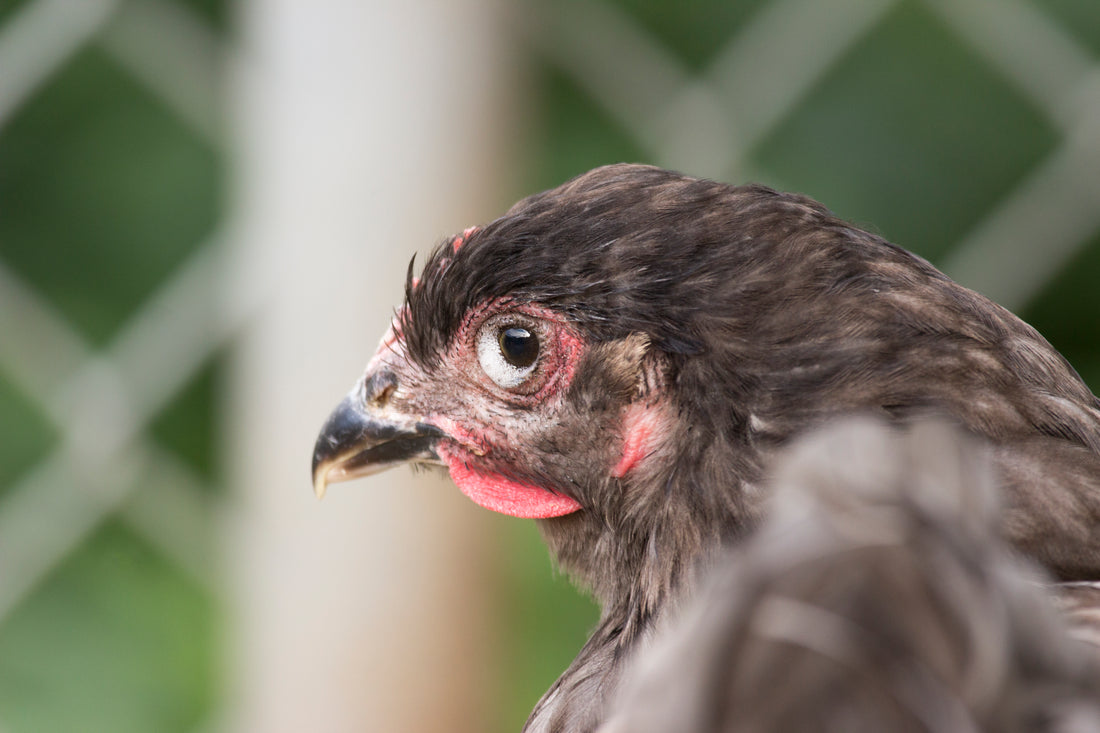
There’s been very little research done on the prevalence of Mycoplasma Gallisepticum (MG) in backyard poultry, but interestingly enough there are so many backyard poultry owners spouting out claims that “majority of backyard flocks are already infected with it”. Even worse, they’re claiming their state vets and National Poultry Improvement Plan coordinators are the ones offering them that information.
Spreading misinformation about a very serious and harmful disease for poultry is detrimental to the poultry industry. This particular piece of information is usually being offered to fellow poultry owners advising them that it’s ok to forego culling a diseased flock or as an attempt to rationalize the sale of chicks and hatching eggs from diseased flocks because “everyone already has it so it’s not a big deal”. Newsflash: MG is a big deal and to knowingly continue to spread the disease is extremely unethical.
MG is a respiratory disease found in poultry. It’s also one of those diseases that may never show clinical signs in their host until a stressful event takes place. Infection can appear in varying degrees of respiratory distress, difficulty breathing, coughing and/or sneezing, nasal discharge and conjunctivitis with frothiness around the eyes. Feed efficiency and weight gains are reduced along with decreased overall production in laying flocks 1. Symptoms are generally more severe in Turkeys, but the disease is not exclusive to chickens and turkeys. It can also infect other avian species including your average wild bird.
In 1994 there was an outbreak of MG in the House Finch in the US. This outbreak offered an opportunity for scientists to dive into the transmission of the disease amongst other species. It was even hypothesized that the adaption of MG to a new host is not so easy and needs certain favorable factors helping it (like a stressful event or other underlying illness/disease). Chickens kept with MG infected House Finches showed that clinical disease was not present in the chickens or the symptoms were mild. It was demonstrated that different strains of MG originating from House Finches induced the disease in experimentally infected chickens making it evident that MG could be reintroduced from wild hosts to poultry. However, results suggested MG evolved to adapt to the House Finch, simultaneously decreasing its virulence for chickens 2.
Not only does misinformation of MG come in the form of “everyone already has it”, it also comes in the form of “99% of wild birds are carriers”. Unlike the lack of research in regards to the prevalence of MG in backyard poultry, a study published in April of 2020 combined all MG research studies published from January 1951 to December of 2018 to conclude that the MG prevalence in wild birds is only 28% based on the studies that used the PCR method (swab) of testing 2. If you include the other studies’ findings that used alternative testing methods other than the PCR method, the average prevalence in wild birds would fall to just 12%.
12% and even 28% are much smaller percentages than the 99% being erroneously speculated and offered as fact to fellow poultry owners to persuade them into believing every free-ranging poultry flock is infected with MG. This is simply not the case. Transmission from wild birds to poultry is possible, but it’s not as likely as some would make it seem. This is one of the reasons most commercial hatcheries will house their birds indoors, to protect them from possible disease spread, but not exclusively from MG specifically.
MG is both a vertically and horizontally spread disease. This means an infected bird can pass the disease to their offspring through the egg and can also spread it through the air, contamination of water and feed, the environment or even by being carried on the clothing and shoes used when visiting with the infected bird. It’s also known that MG can live in a human’s nose for up to 72 hours!
If you’ve ever had a flock test positive for MG, depending on the severity of the diagnosis, you’ve probably been given options to either depopulate or medicate while maintaining a closed, biosecure flock until they naturally passed. It’s not uncommon for the owner of an MG infected flock to not want to put their birds down. Many backyard flock owners believe their birds are family. While there is a way to medicate a diseased flock, antibiotics may only alleviate the clinical signs and lesions but they do not eliminate infection nor guarantee transmission through eggs doesn’t occur, thus leaving the possibility of further transmission to other birds and poultry open.
Should you ever be in this predicament my plea to you is that you do the right thing. Don’t turn to misinformation about the disease to rationalize a reason to spread the disease even further. Please be responsible enough to cull your flock or put them on lock down (no new birds coming in and no birds going out) to help eradicate the disease.
Real-time PCR is becoming the most common test used for diagnosis of MG in poultry. If you’re concerned about a possible infection in your flock ask your local vet to take swab samples from your birds to have tested. Not all labs will preform PCR tests for MG, but you can always request that the samples be shipped out to a lab that does. Any bird can be tested even if you don’t have concerns of an infection. In fact, NPIP participants have the option to participate in the MG Clean program where their birds must be tested every 90 days to ensure their clean status. Participants of the MG Clean program can be found on the NPIP directory with MG listed next to their name under the “Additional classifications for which products qualified” column.
The best way to protect your flocks from MG is to practice good biosecurity and source new stock from MG free breeder flocks. If an MG free breeder of your desired breed does not exist, the alternative would be to purchase hatching eggs from a NPIP participating breeder and preform the dip method using Tylosin Tartrate and keep the eggs, equipment and potential chicks separated from your current flock until they can be tested at 4 months old. The hatching egg dip method was first studied and found to be a promising technique to aid in the progress of controlling the spread of MG in 1963 3. It’s still a popular technique and relevant means for controlling MG in today’s society, but very few backyard flock owners are familiar with the practice.
In conclusion and for the sake of the poultry industry as a whole, it is most vital that backyard poultry owners become more educated with correct information regarding diseases and familiarize themselves with better biosecurity practices. If we continue to allow the misinformation about MG (“majority of backyard flocks already have it” and “99% of wild birds are carriers”) to spread and promote this idea that MG is not a big deal, we will only be prolonging the eradication of the disease. The truth of the matter is that MG is a harmful disease for poultry, but it can be eradicated with proper poultry management from all flock owners.
Sources:

